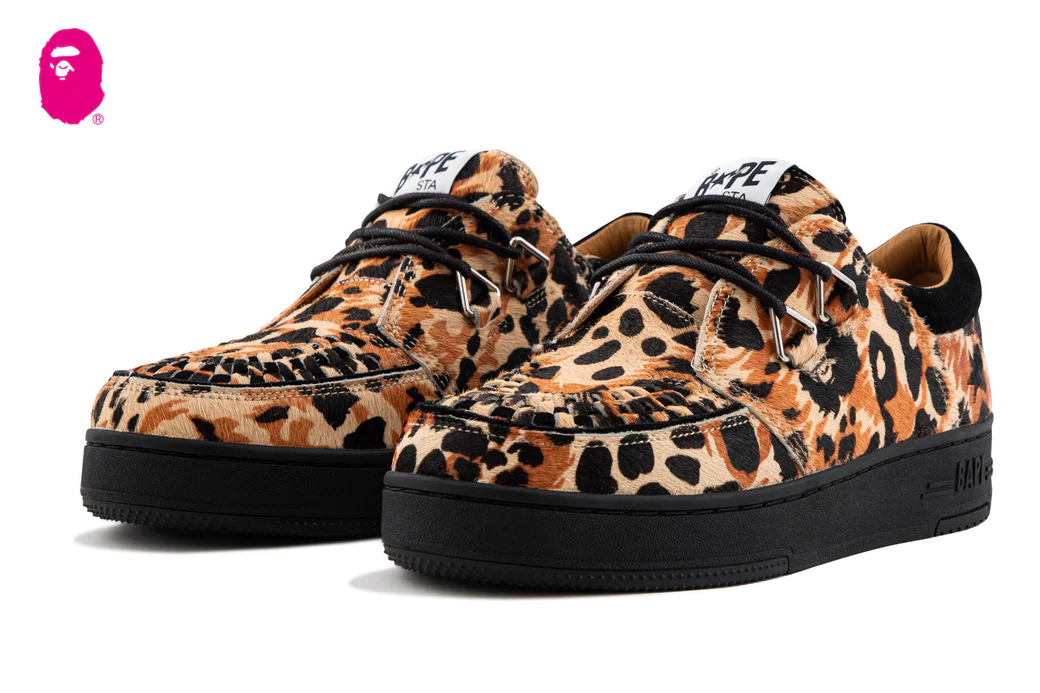Nike’s decision to bring back the Air Terra Humara for 2024 is more than just a nostalgic nod to the past—it’s a strategic move that reflects the brand’s commitment to balancing heritage and innovation. Originally introduced in 1997, the Air Terra Humara quickly became a beloved choice among trail runners and outdoor enthusiasts for its rugged design, distinctive style, and performance-driven features. Now, nearly three decades later, Nike has reimagined this iconic silhouette for a modern audience, combining the retro appeal of the original with updated materials and technology.
The 2024 iteration of the Air Terra Humara seeks to capture the essence of the late ‘90s outdoor aesthetic while addressing the functional needs of today’s consumers, who demand both performance and style. By maintaining the shoe’s bold design language and signature details, such as the wavy overlays and aggressive outsole, Nike ensures that the re-release remains true to the original. Yet, it’s the subtle changes and technological enhancements that distinguish this comeback from being just another retro revival. In this critical analysis, we’ll explore how the re-release balances past and present, its potential impact on the sneaker landscape, and what it means for Nike as it navigates a complex market increasingly defined by performance, nostalgia, and sustainability.
The Original Air Terra Humara: A Retrospective
When the Air Terra Humara first hit shelves in 1997, it was celebrated as a versatile trail shoe that could handle rough terrain while offering comfort and stability. The design was bold and unapologetically aggressive, reflecting the aesthetic trends of the time, which favored exaggerated shapes and contrasting textures. The shoe’s name, “Terra,” derived from the Latin word for Earth, indicated its suitability for diverse terrains, while “Humara” was a nod to the indigenous Tarahumara people of Mexico, known for their long-distance running prowess in challenging conditions.
The original model featured a multi-layered upper constructed from mesh, synthetic leather, and durable overlays, providing both breathability and support. The midsole incorporated Nike’s signature Air cushioning technology, ensuring that the shoe was as comfortable as it was capable of absorbing impact on rocky paths and uneven surfaces. What set the Air Terra Humara apart, however, was its aggressive rubber outsole, designed with deep lugs for maximum grip on dirt trails and loose gravel.
Visually, the shoe’s unique design was characterized by its undulating lines and organic curves, which evoked the natural topography of mountains and valleys. This aesthetic was enhanced by a mix of earthy tones—such as mossy greens and muted browns—contrasted with vibrant pops of color, like neon yellow and electric blue. The overall look was dynamic and daring, appealing to both outdoor adventurers and streetwear enthusiasts who appreciated its unconventional style.
The 2024 Re-Release: Preserving Heritage While Embracing Modernity
For the 2024 re-release, Nike has stayed true to the essence of the original Air Terra Humara while making key updates to ensure the shoe meets the standards of contemporary consumers. The most obvious change lies in the materials. While the overall construction still features a mix of synthetic leather and mesh, Nike has opted for more sustainable and lightweight materials. The incorporation of recycled polyester and Nike’s proprietary Flyleather technology—made with at least 50% recycled natural leather fibers—speaks to the brand’s broader commitment to sustainability without sacrificing performance.
The silhouette of the 2024 Air Terra Humara remains faithful to the 1997 design, but the shoe has been refined with a sleeker profile. The overlays, which once served purely as structural elements, now include subtle reflective detailing, adding both a modern touch and enhanced visibility for nighttime use. Additionally, the mesh portions of the upper have been upgraded with a more tightly woven pattern to increase durability and reduce the risk of tearing, a common issue in trail shoes that see heavy use.
Comfort has been a key focus in the redesign. The new midsole features an updated version of Nike’s Air cushioning system, providing greater shock absorption and energy return. This, combined with the addition of a more ergonomic footbed, makes the 2024 Air Terra Humara better equipped for prolonged wear, whether on rugged trails or urban pavements. The outsole has also been revamped with a multi-directional tread pattern, improving traction on both wet and dry surfaces.
One of the standout elements of the 2024 re-release is the color palette. Nike has introduced a range of new colorways that blend the shoe’s heritage with contemporary sensibilities. Earthy tones like Olive Green and Sandstone are juxtaposed with bold accents of Infrared and Turquoise, creating a visual dialogue between past and present. This combination ensures that the shoe appeals to both long-time fans of the model and a younger audience drawn to the retro-futuristic aesthetic that has dominated sneaker trends in recent years.
Navigating the Market: Competing in a Saturated Landscape
The revival of the Air Terra Humara arrives at a time when the sneaker market is more competitive than ever, with numerous brands vying for attention in the trail and outdoor categories. In recent years, brands like Salomon, Hoka One One, and The North Face have gained traction with their performance-focused designs, capturing the interest of consumers who value functionality and technical features. These brands have also benefitted from the rise of the “gorpcore” trend, which celebrates outdoor-inspired fashion in urban contexts.
To position the Air Terra Humara effectively within this crowded field, Nike has emphasized the shoe’s dual identity as both a trail runner and a lifestyle sneaker. By blending performance elements with a bold, street-ready aesthetic, Nike aims to attract a diverse consumer base that includes both outdoor enthusiasts and fashion-forward sneakerheads. This strategy is reflected in the marketing campaign for the re-release, which features imagery of the shoe in both natural landscapes and urban environments, underscoring its versatility.
However, the challenge lies in convincing today’s consumers that the Air Terra Humara can hold its own against more specialized models from rival brands. While the shoe’s heritage and distinctive design give it an edge in terms of nostalgia, it will need to prove itself as a viable option for serious trail runners and hikers who prioritize features like weight, breathability, and technical support. To address this, Nike has released detailed performance specs alongside the re-release, highlighting the improvements made to traction, cushioning, and overall durability.
Nostalgia is a powerful force in the sneaker industry, and Nike is well aware of its potential to drive sales and create buzz around re-releases. The Air Terra Humara is no exception. The shoe’s reappearance taps into the current wave of ‘90s and early 2000s revivals, appealing to consumers who have a strong emotional connection to that era. For many, the Air Terra Humara is more than just a shoe—it’s a symbol of an adventurous spirit, a reminder of the days when outdoor gear began crossing over into mainstream fashion.
The 2024 re-release aims to capitalize on this nostalgia while introducing the shoe to a new generation unfamiliar with its origins. Nike’s promotional materials include archival footage of the original Terra Humara in action, juxtaposed with contemporary shots of the new model on rugged trails and urban streets. This approach positions the shoe as both a timeless classic and a forward-looking design, capable of evolving with the times.
The return of the Air Terra Humara also carries broader implications for Nike’s strategy. By reviving a model that was once considered niche, Nike signals its willingness to take risks and explore new directions in its product lineup. This re-release is not just about revisiting the past; it’s about redefining what the brand stands for and expanding its influence in segments beyond basketball and running.
The re-release of the Air Terra Humara in 2024 is a calculated move that demonstrates Nike’s understanding of the evolving sneaker landscape. By staying true to the original’s aesthetic while making meaningful updates to performance and sustainability, Nike has positioned the shoe as a bridge between generations—a testament to its ability to innovate without losing sight of its roots.
If the re-release proves successful, it could pave the way for more heritage models to make a comeback, perhaps even inspiring Nike to delve deeper into its archive of outdoor and trail-inspired designs. The success of the Air Terra Humara could also encourage Nike to invest more heavily in its outdoor category, further developing products that blur the line between performance and lifestyle.
In the end, the 2024 Air Terra Humara is more than just a re-release. It’s a statement of intent—a reminder that Nike’s legacy is built not just on cutting-edge innovation, but also on a rich history of designs that have shaped the culture of footwear. Whether on rugged trails or city streets, the Air Terra Humara stands as a testament to the enduring appeal of bold, uncompromising design.
No comments yet.








